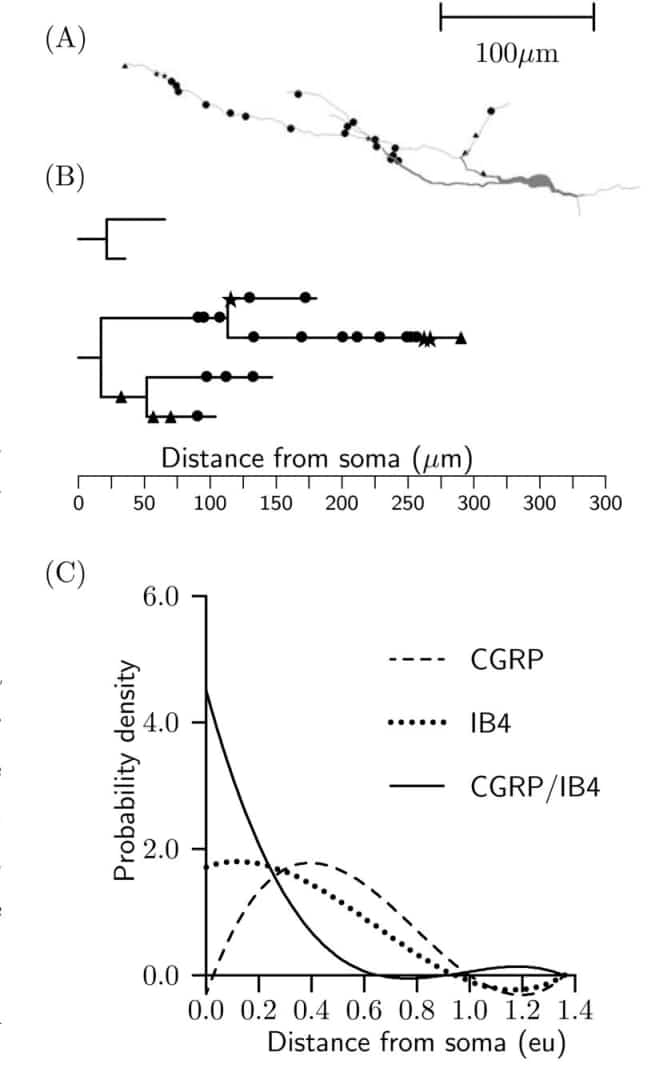It is well known that the location of contacts on dendritesinfluences the behaviour of the neuron. The conventional way todescribe these locations is based on a Sholl analysis (Olave et al., 2002). This analysis, however, only considers the physical distance of a contact from the soma, and may give similar results for morphologically distinct cells. Wepresent another procedure based on the equivalent cable (Lindsayet al., 2003) that takes into account, not only the morphology of the cell, but also its biophysical properties.The equivalent cable, not to be confused with the Rall equivalentcylinder or its empirical generalisations (Clements & Redman,1989), is an exact unbranched model of the dendrite and its input. The location and strength of input on the neuron is reproduced exactly by the location and strength of input on the equivalent cable (Lindsay et al., 2003). Contacts located on the neuron give rise to a unique distribution of contacts on the equivalent cable that may be used to characterise their locations. This procedure is illustrated for a typical cholinergic interneuron, located in lamina III/IV of the dorsal horn of the spinal cord, stained to reveal three classes of unmyelinated afferent contacts (Fig. 1A). The position of each contact is shown on the dendogram in Fig. 1B, and their densities, derived through use of the equivalent cable, are shown in Fig. 1C.
University of Glasgow (2004) J Physiol 557P, PC58
Communications: Using the Equivalent Cable to characterise the density of contacts on dendrites
K. Lindsay (b),D.Maxwell (a),J.R. Rosenberg (a) and G. Tucker (a)
(a) University of Glasgow, Glasgow, UK and (b) Mathematics, University of Glasgow, Glasgow, UK
View other abstracts by:
Where applicable, experiments conform with Society ethical requirements.

